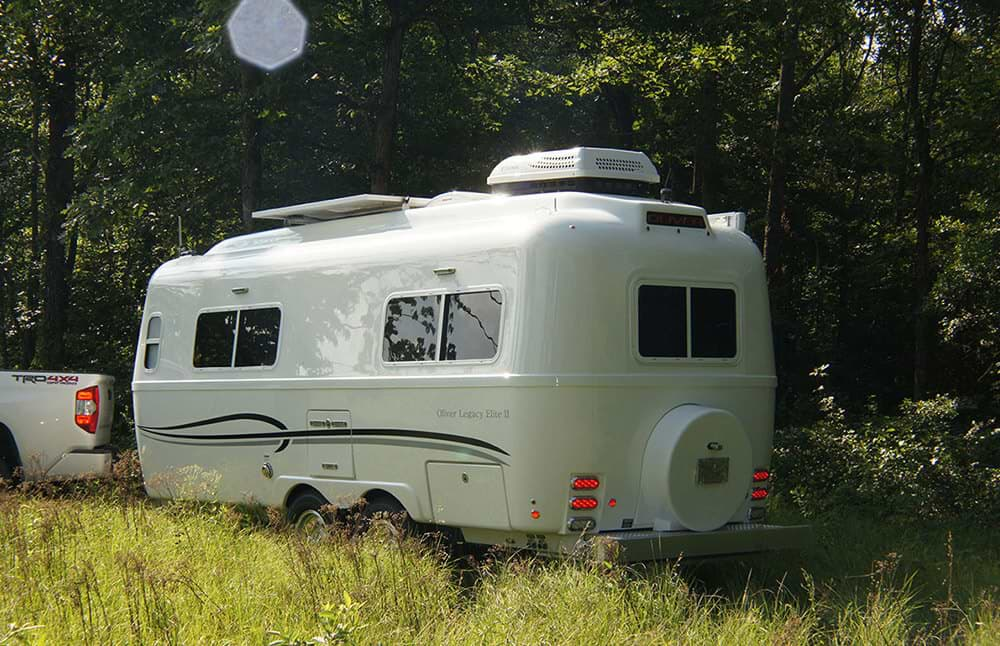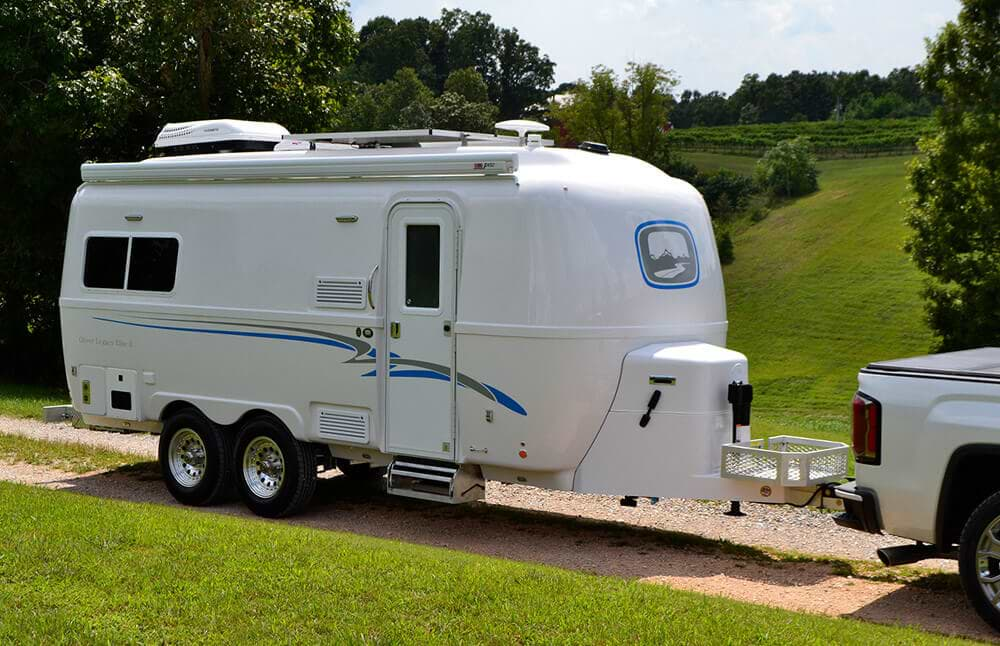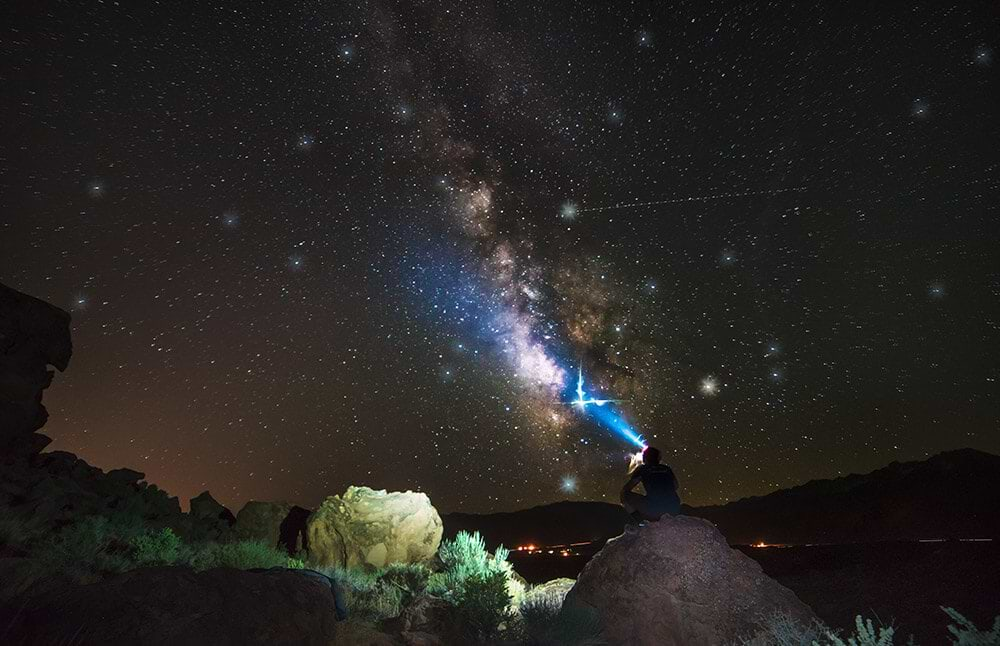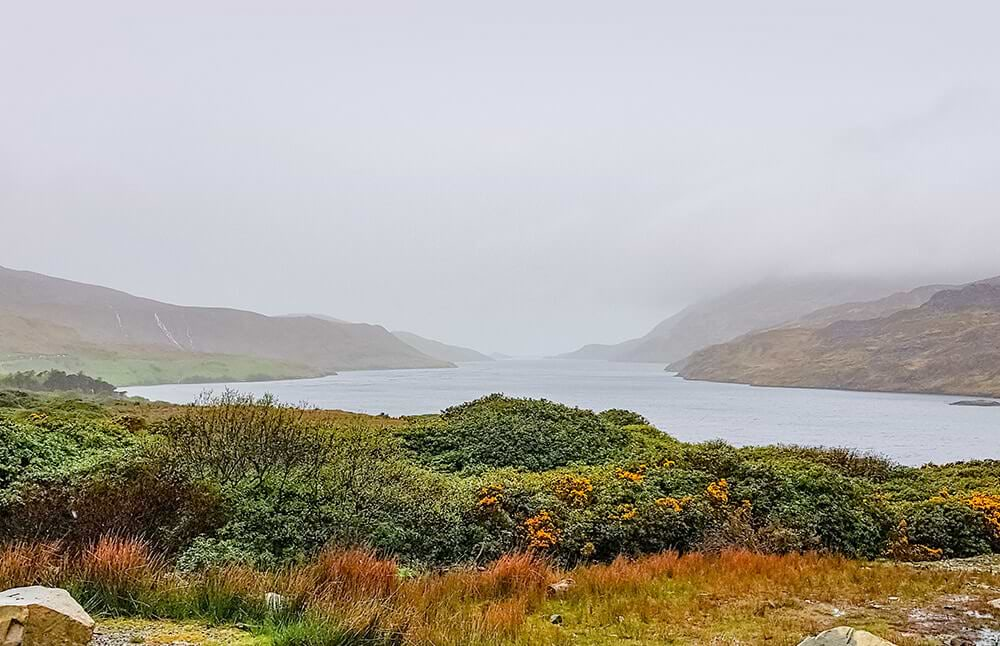There are a lot of different ways to enjoy the outdoors. Boondocking, also known as Free Camping, is one way that allows you to fully experience life outside of the big city on your own terms. There’s something attractive about being all by yourself, out on the open road, dependent on no one and nothing. Disconnected living in a time where everything is connected can be considered the ultimate act of rebellion. Yet, we need disconnection sometimes. Boondocking allows you to disconnect and unwind, leaving behind the things that tether you to the real world and freeing your mind and body to explore nature the way it’s meant to be explored. But how exactly do you boondock across America? This guide will help you on your journey as you explore the highways and byways that make up the US.

What is Boondocking?
In short, boondocking is the art of camping in an RV or Travel Trailer without a hookup. The apparent downside to boondocking is losing any connection or electricity supply to your RV. On the upside, however, that lack of a leash means that you aren’t restrained to civilization of any kind. It gives you the freedom to roam as you please. Some views we’ve found while boondocking are hidden gems no one would consider looking for. These locations are usually less popular because they’re far from where people regularly visit.
That’s the true beauty of boondocking. Being alone, dependent on yourself, and not worrying about anyone else being close to you. You must be responsible while boondocking, though. You need to have a checklist of the things that you need to carry with you and everything that you take to a site you need to carry with you when you leave. Unfortunately, not all campers engaged in boondocking think the same way, and sometimes, you’ll come across the residue of someone else who used a site in the past. The only thing you can do is promise yourself that you won’t be like them.
In recent years, boondocking has become quite popular with campers. It is cost-effective and gives you much more freedom for your travels. Being disconnected from the rest of the world also has its perks. Overall, anyone who enjoys camping should try boondocking at least once to see if it appeals to them.
Types of Boondocking

Boondocking isn’t just limited to a single kind of camping. You might hear “dry camping” when discussing these visits. There’s no difference between the two conditions. However, within the field of dry camping, you will notice several different subtypes, namely:
Overnight Stay
Overnight stays happen when you’re driving across a region and want to pull up and park for the night. Several businesses provide parking for overnighting RVs, although some do have a cost attached to them. Walmart parking lots specifically have provisions for RVers intending to overnight. Other businesses might offer a similar courtesy to visitors. It’s better to shell out $50 for a single parking spot!
There’s also the opportunity to borrow a parking spot from a friend you might have. Depending on how much the friend likes you, it’ll likely be a free parking spot, and you could even stay longer than a single night. There are entire communities dedicated to the practice, which has garnered the nickname “Moochdocking.” A few landowners have even allowed visitors to park on their land for free, but it’s always essential to consult nearby owners before pulling up on their spread to park for the night.
Scheduled and Developed Campsites
Campgrounds operated by federal, state, county, or municipal authorities are great locations for short stays. These spots are best for boondock campers who are still getting into the lifestyle but want to try it. In many of these developed campsites, there’s a limit on the maximum stay time. While some of these sites might be free, a few have fees for entering, parking or using hookups for your RV. Several operate on a reservation basis, while others use the first-come-first-served methodology.
Many campsites offer amenities such as fire rings, grills, picnic tables, and other things necessary for a proper camping trip. Because they are easily accessible and close to amenities, these sites tend to fill up quickly during holiday weekends. Book ahead to ensure you get the best sites.
Primitive or Rustic Campsites
These are the ones you’ll encounter most often in your boondocking travels. They’re the roughest living and are situated quite far from civilization. For newcomers to boondocking, taking on these sites might be exciting, but you could quickly find yourself out of your depth. These sites are perfect for those who have been boondocking for a while. Campers who have a little bit of experience roughing it while camping might enjoy it. There are no amenities, and there’s usually no one else for quite some distance.
You’ll usually find these camping spots on federal lands within forest reserves or wildlife areas. National parks also fall into this category. Usually, when you set up camp in these spots, you can spend some time exploring the area you’re in. More often than not, there will be a lot of trails you can trek through. By studying like this, you find the fantastic, breathtaking views that boondock campers crave. If you ever wondered precisely how beautiful nature gets, this is the best way to experience it yourself.
Benefits of Boondocking
Boondocking is for adventurous souls longing to see the world. The age of explorers is long past, but there is something in nature left to discover. However, while it’s a beautiful experience, many people considering boondocking have concerns about its safety and security. If you camp responsibly, this becomes less of an issue. There are several reasons why you might want to consider boondocking as a camping option, including:
Affordability
Boondocking usually costs nothing besides the money you pay to fill up your gas tank and buy your supplies. Even developed campgrounds with an attached fee typically cost you at most $10 to $20 a night. If you’re more into roughing it, those developed campsites are not worth the money. It would be easier to find dispersed camping at a free site and enjoy it alone. In the case of RV owners, parks that cater to those vehicles have steadily increased their prices over time. As a result, boondocking would save a lot of money over a year. If you’re an RV owner, consider it an alternative to pay-to-camp spots.
Breathtaking Sights

It’s one thing to pay for and enjoy an experience, but it’s another to discover a spot yourself. Many dispersed campgrounds exist near the edges of lakes or along the banks of rivers. Some of them are located along cliffs or plateaus. Tourist brochures can’t reproduce the views from these locations, so you must see them yourself. Their uniqueness is what attracts people to them. Finding a spot that takes your breath away in a national park or along the edge of a bluff as the world unfurls like a tapestry at your feet is one of the most life-changing experiences you will ever have. The potential downside is that you’ll always want to discover more.
Solitude
We are social creatures, but too much socializing can make us bored and need to recharge. The isolation you get from boondocking is unmatched. You don’t need to worry about ever interacting with another human being for as long as you’re out there. It’s truly a unique feeling being that far away from the hustle of humanity that you’re likely to find in cities or towns. Because of the variety in campgrounds, you can choose a site with neighbors nearby if you prefer being closer to people. For those of us who like our alone time, there are wide open spaces where we can lose ourselves without worrying about running into another person.
Losing Yourself in Nature

You get a particular appreciation for nature as a boondock camper. RVing usually helps you reconnect to the world around you uniquely. Setting up camp far away from civilization allows you to appreciate nature entirely differently. When you lay down that first night in the middle of the wilds, switch off your lights and realize how many stars adorn the night sky that you don’t see when you’re in a town or a city is when it hits you how much you’re missing out on. Nature might be all around us, but few of us take the time to appreciate our surroundings.
Finding Boondocking Sites
We’ve outlined several of the best free campsites for boondock travel trailers and RVers in different parts of the country. However, boondocking sites aren’t necessarily campgrounds. Aside from the suggestions we’ve mentioned, there are a few distinct sources that you could look to for your boondocking needs:
Forestry Sites
The US Forest Service or the Bureau of Land Management (BLM) usually reserve spots in national forests for campers. Calling ahead helps you determine whether you need a permit to camp on those sites, whether a fee applies, and what the maximum stay time is at the park or forest. Contact information for each department is available on their websites.
Some government-owned lands like (BLM) will require you to pick up a camping pass and may restrict the length of stays permitted.
Membership Clubs
A new development probably long overdue in the camping world is the idea of a membership camping site. Landowners can offer up spare space on their properties so RVers can take a few nights to explore the area. Membership to sites like these is affordable and well worth it if you plan to be boondocking for a while. Additionally, if you’re a member of some organizations, such as the Elks, parking lots for those lodges might accommodate members for overnight stays. Consulting the chapter’s secretary may offer more insight into leveraging these options.
Store Parking Lots
Any port will do in a storm. When you’re passing through a civilized area and you need to stop for the night, the cost of an RV park will be expensive. However, you can always choose the free option and park in the parking lot of a big-box store like Walmart. Companies such as Costco, Menards, and even Cracker Barrel offer free overnight parking for RVers, but the accommodation differs by location. Some require you to register with the administration before parking. Consulting the store’s staff might help determine where to park and stay.
Places That Should be Avoided
In any locale, there are a few places that you should be aware of that are no-go areas. Whether because the residents aren’t particularly friendly to visitors or the location is a crime hotspot, there are a few warning signs that the experienced boondock camper will notice immediately. A few of the elements to consider when you’re picking a spot to stay are:
- In populated areas, What looks like a deserted spot during the day might get very busy at night. If you don’t know anyone locally, ask around to find out if that spot is one you should be staying in.
- Be courteous if you stay at a place where trucks are likely to be present. Truckers can be territorial, and you shouldn’t harm yourself over a parking spot.
- Boondocking is about privacy, security, and solitude. If you notice a space for your RV to squeeze between two others, you should avoid that spot since it will likely annoy your neighbors.
- Federal lands are available for all to use, but you must ensure that the road can handle your vehicle’s size and weight class. Researching whether the route can manage your rig will save you some moments of anxiety on the way to your campsite.
- On private lands, make sure the landowner knows you’re there and has explicitly permitted you to stay. If they haven’t, you have no right to be there.
- Many boondocking campsites have a limit on how long campers are allowed to stay. Ensure you know if there’s a maximum stay-time for that particular campsite. If you require a permit to camp at that location, you should also know where you can get it and how much it costs (if anything). Knowledge about your camping site is the most important thing for a boondock camper.
Essentials for Boondocking Responsibly
By now, you should be excited to head out on the open road and discover what America offers you. Not so fast, pilgrim. You need to remember one crucial detail that many new boondock campers overlook. Generally, you can survive in the wilderness while camping comfortably enough once you have Water, Food, and Electricity. These are what you’d call your essentials. Obtaining them is manageable, but being prepared is vital to your survival and the ability to remain in the wild for as long as possible.
See our guide Tips To Keep In Mind When Traveling
Water
In most commercial RVs, there are usually three tanks for water storage. One is a freshwater tank (for potable water), one is a grey water tank (for wastewater from sinks and the shower), and one is a black water tank (for excrement). Larger containers translate to a longer time for the RV to remain self-sufficient. Eventually, however, you’ll have to head to a dump station and refill your potable water. There are a lot of ways you can preserve water out on the road, including
- Flushing your toilets less
- Keep your dishwashing to once a day
- Navy showers – use running water only when necessary while showering
There’s no hard-and-fast rule for what you should do to conserve water. Each V’s water flow situation is different. The only accurate way to determine the limits of your water storage situation and how long you can go before a dump is by trial and error. The better you are at conserving water, the longer you can stay in the boondocks.
Food
Meal planning is among the most vital skills to have when boondocking. Stocking up on groceries might only happen occasionally, so knowing what you need during your one grocery trip before heading out into the wilderness is essential. If you’re planning on heading far from civilization, you won’t have the option of dropping into the nearest 7 11 to restock. Like in real life, having a shopping list that references your meal preparation schedule can help you keep costs to a minimum.
Additionally, depending on what your RV comes with and what amenities you might have, using tinned goods and ready-to-eat meals is an option you can explore. If you’re not much of a wilderness chef, these will at least ensure that you have something you can eat, even when you’re too tired or busy to rustle up some dinner. Your food, like everything else out here, is your responsibility. Knowing what you can cook and eat and how long before you need to get supplies is essential in evolving your boondocking.
Electricity
As much as we’d like to throw out all the trappings of the world, it’s a sad consequence that we need electricity for many things. RVs typically run on two separate electrical systems. A 120-volt power supply is akin to the power distribution in your home (AC). There’s also a 12-volt supply that runs off batteries (DC). If your RV is of the driving type, there’s yet another electrical system that helps to operate the vehicle. For isolation, this power system is separate from the other two. You can think about that one as the auto-electrical system in a car.
If you’re off-grid, you won’t have any hookups for your RV to connect to. Typically, in the past, generators have been used to power RVs while out in the boondocks. The upside is that, as long as you have fuel, generators can run indefinitely when you need them to. The downside is that they can be loud, which might drive the wildlife away and disturb your neighbors. Generators can plug directly into an RV, power the entire rig, and recharge the batteries. When you switch off the generator, the cells control the power supply.
Solar power is becoming more accessible, but it suffers from a few hurdles that make it unreliable. Panels can’t generate enough power on cloudy days, and they are not very efficient in catching energy, even when you are out in bright sunlight. Generators are still the best option, even with their downsides. Each RV’s demand for power differs by what’s connected to its electrical system. Figuring out how much battery power it will take to run your rig and for how long is a trial-and-error errand. Ideally, it would help if you did this before you set out to boondock so you’d have a baseline for operation.
Don’t Be Afraid to Try
Boondocking, just like camping, is about your planning and managerial skills. You need to plot your course to get to your campground, know how long you’re spending there, and where you’ll get supplies and dumps. The fun part of the trip is getting into the great outdoors with the most minimal comforts of home with you. Boondocking is one of the last great adventures we have as explorers of our country.
There’s no better way to discover the secret gems of America than to boondock across it.
See more guides on tips for boondocking in a travel trailer or RV.
If Boondocking sounds a little too much for you, see our guide on finding the best RV parks.

